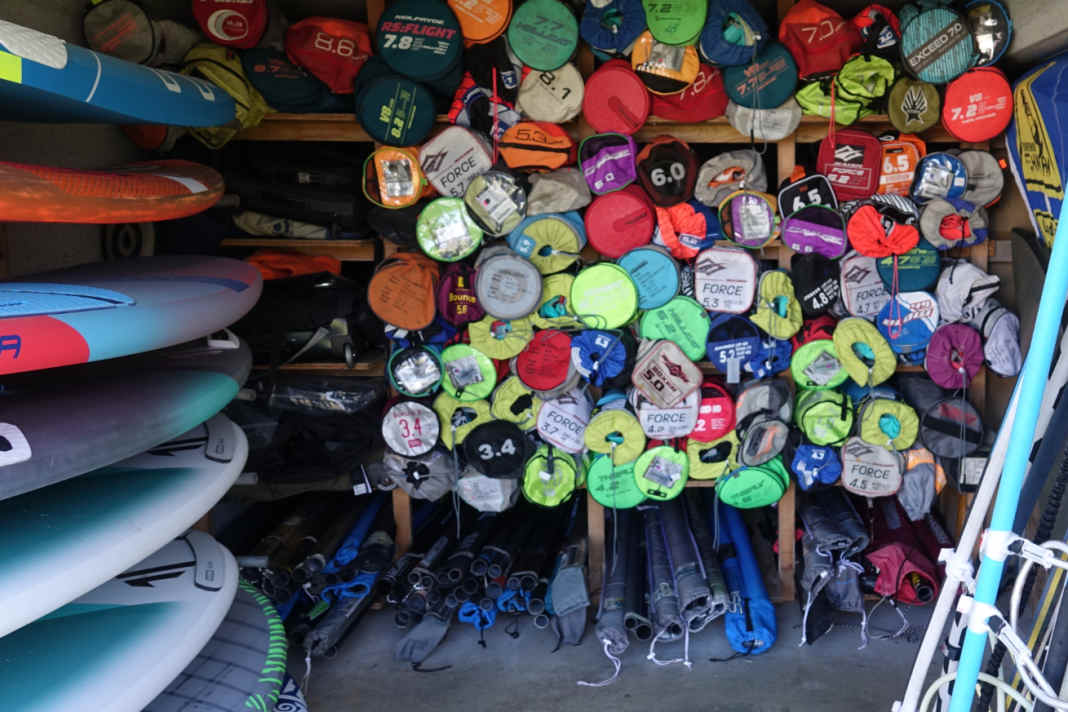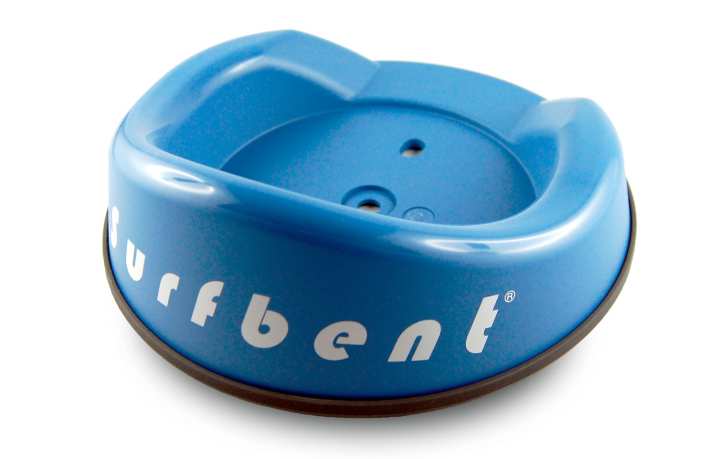





Buy or hire a windsurfing board?
Even if representatives of the surf industry don't particularly like to hear it - it doesn't make sense to buy your own equipment straight after your first surf course. Why? Just like a toddler grows out of their clothes every month, you also outgrow your equipment in the early stages of your surfing life. With every day on the water, you'll learn more and your demands on the equipment will change. A beginner's board with a volume of over 200 litres is perfect at the beginning, but may quickly become too big and sluggish for you - if you stay on the ball. Conversely, you will soon want a larger and more powerful motor instead of your small learner sail.
For the first few days of surfing after the course, it's worth renting equipment from a VDWS surf centre or surf club and possibly investing a few euros in an advanced course. This way you can learn the appropriate manoeuvres, switch between different board and sail types and sizes and thus secure a later purchase decision without risk.
Tip: Many surf centres sell cheap equipment at the end of the season. Just ask!
Shop or online?
As soon as you go out on the water regularly and are past the beginner stage, it starts to make sense to have your own equipment - you can choose your spot freely, are independent of opening times and save money in the long run. If you don't have any previous experience, it makes sense to seek advice in the shop, where you can get tips on setting up and have someone to talk to in an emergency. Many shops also offer used or test material. Of course, there are also many bargains and good offers online, but there are also many pitfalls and questions. To find the right one, you first need to know what suits you: What type of board with what volume? How big should the sail be? Do the mast and boom fit my sail size? How do you recognise whether used material is still fit or already scrap?
We have summarised the most important information about the board below:
The right board size and type
There are countless types of boards on the market with terms such as "freeride", "slalom", "wave", "freestyle" and more, which are unfortunately often confusing for newcomers. These terms refer to the recommended area of use. Board classes such as wave, freestyle or slalom are unsuitable for beginners because they require a high level of riding ability! Regardless of the age of the windsurf board, the following board classes are suitable for you as a beginner:
Longboard
The best board type for low wind and flat water use. Longboards have a centreboard that minimises drift, and they also run fast and have good height even in light winds - ideal if you mainly want to cruise on inland lakes and practice in a relaxed manner. As always, the decisive factor is the volume; the rule of thumb for intermediates is:
Volume calculation: body weight + (80 to 110) = ideal board volume
Freerideboard
Windsurf board without centreboard, designed for planing. Quite slow in light winds (<12 knots) compared to longboards and with greater lateral drift, advantages (faster) only when planing. Ideal if you already know how to harness surf, practise planing and mainly go out on the water at spots where the wind blows at over twelve knots.
Volume calculation: Body weight + (50 to 80) = ideal board volume.
Inflatable WindSUPs
Inflatable boards that can be used for stand-up paddling (SUP) and - if they are equipped with a windsurfing option (a thread in the deck into which a mast base plate can be screwed) - also for windsurfing. As the sport has spilled over from America to Europe, the dimensions are given in feet and inches. Ideal boards with sufficient volume are between 9'5'' (9 feet, 5 inches) and 11'6'', which corresponds to around 3.00-3.50 metres.
Please note:Boards without a centre fin or daggerboard are absolutely unsuitable for windsurfing (!) because the lateral drift is too great in light winds. WindSUP boards, on the other hand, are ideal if you have a storage and transport problem and as a family board for light winds.
Condition, age & price
A board that is ten years old may be in top condition and much better suited to you than a new windsurf board in the wrong category (e.g. wave) or size (e.g. too little volume). Older used boards can be found on Ebay and other platforms for as little as 100 to 200 euros. The only decisive factor for boards is the size and whether the cover has cracks or holes through which water can penetrate. Damaged areas do not have to be a problem as long as they have been professionally repaired. The windsurf board should also have a mast rail in which a mast base plate can be mounted. Very old models often require special mast base systems that are no longer compatible with many sails and for which replacements are no longer available.
Discover hidden damage
Older boards sometimes become soft and can then tear in the affected areas and draw water. Before buying, lay the board on the ground and firmly press the areas between the foot straps up to the mast track with both thumbs. If the deck is soft, leave it alone or press the price. If everything is hard, it will hold. Open cracks or holes are an exclusion criterion, visible and hard repair areas are not a problem in themselves. Irregularities in the design or paintwork can indicate hidden repair areas. This is often the case in the bow area. It is important that the damage was sealed before the windsurf board was able to take on water. Always ask the seller about previous damage.
Stress area Brettnase
The bow areas of boards are often badly affected because the mast regularly hits the nose of the board - especially when you are learning to harness surf and produce the inevitable "skidding falls". An inexpensive, self-adhesive nose guard made of thick foam ensures that your windsurf board survives these practice phases unscathed - available in well-stocked surf shops from 40 euros. Another tip is the Surfbent (price: 68 euros). This is screwed onto the deck with the mast base and prevents the mast from hitting the tip of the board hard.


